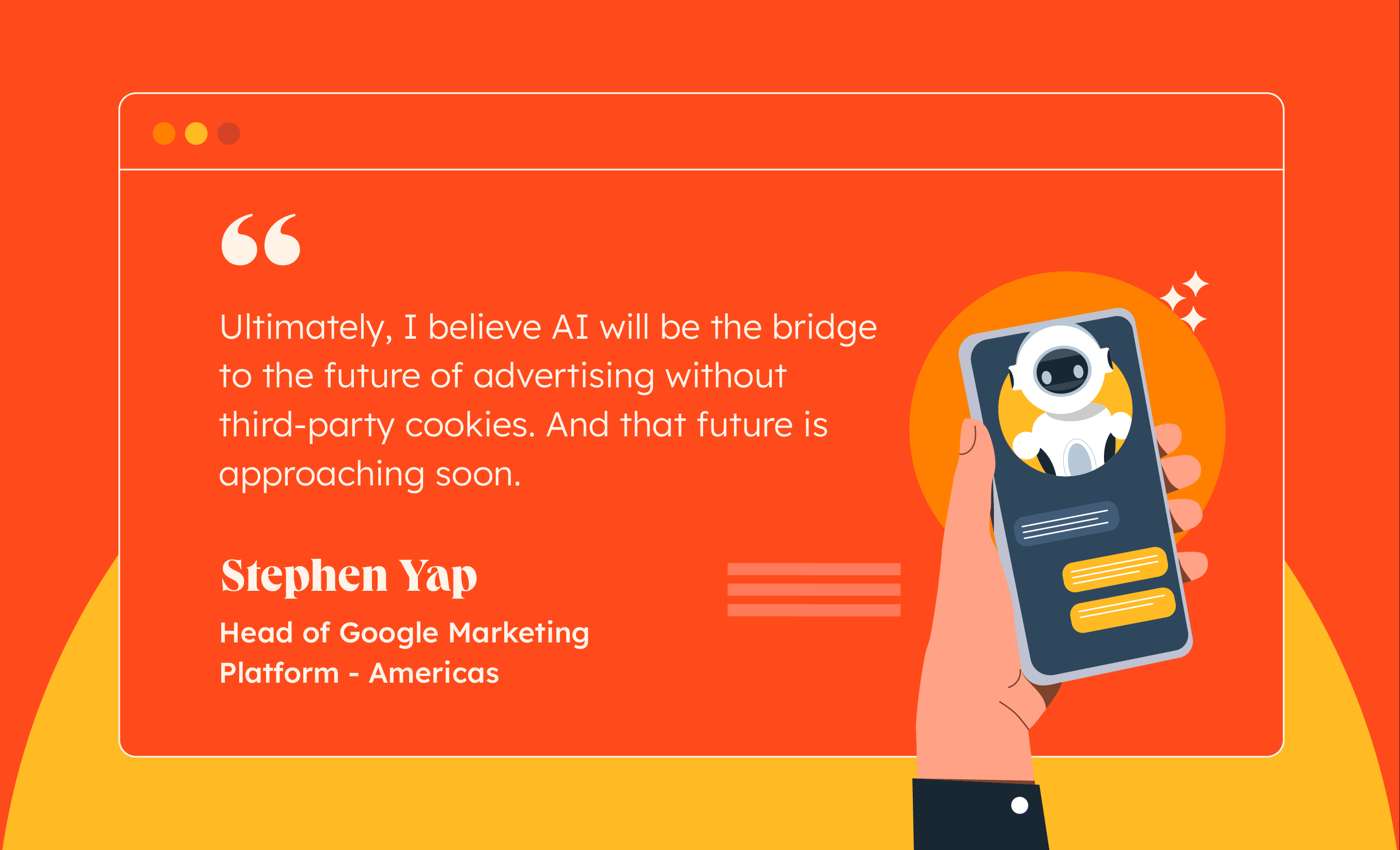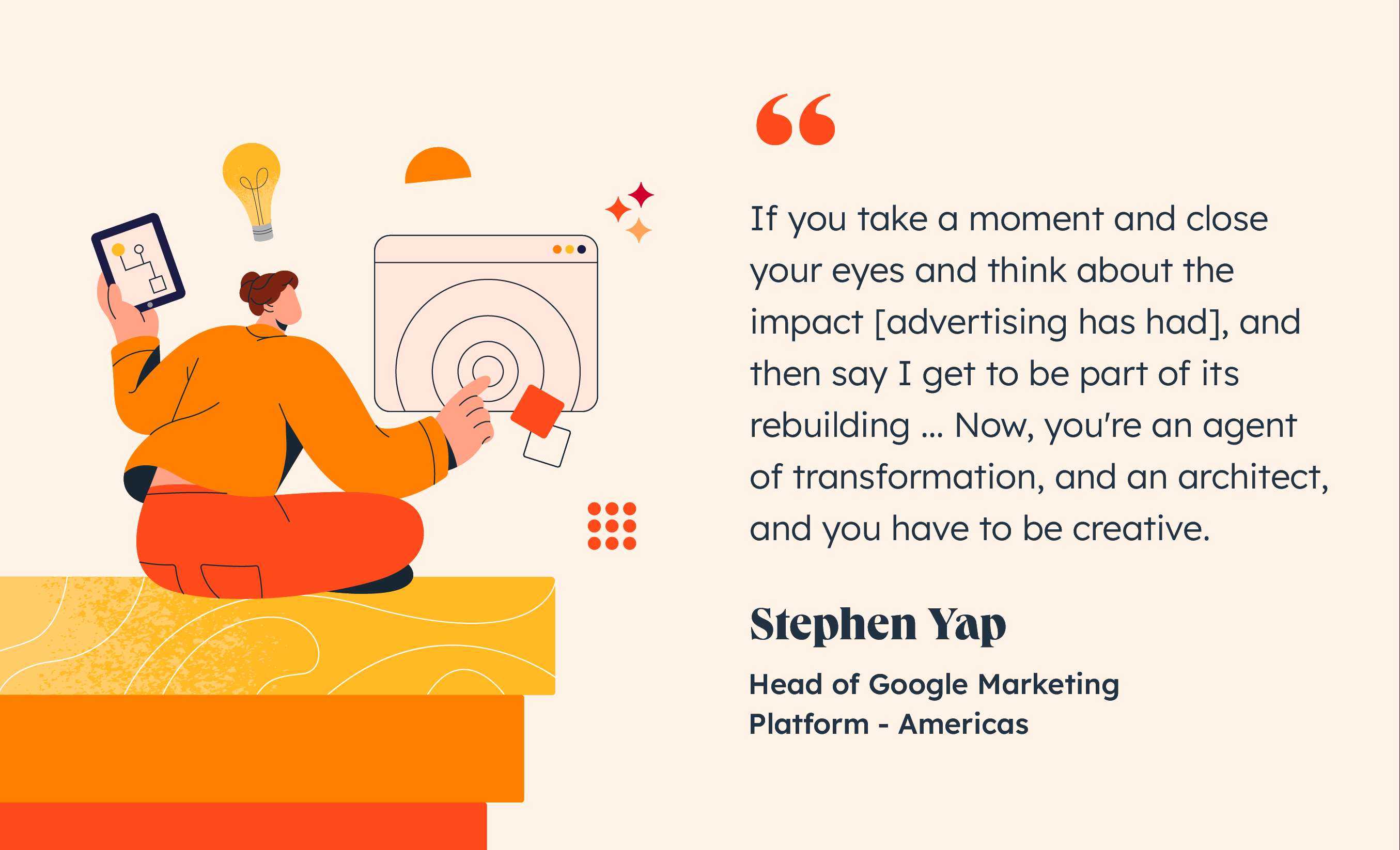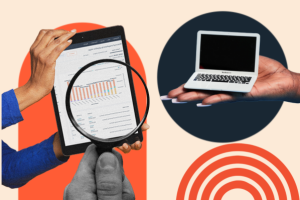
Welcome to HubSpot’s Expert Edge Series, where we interview top execs at major brands to explore their perspectives on the latest trends, challenges, and opportunities shaping the industry.
Earlier this month, Google Chrome took another step in its plans to phase-out third-party cookies.
And yet HubSpot Blog Research reports that 83% of marketers are still leveraging third-party cookies in some capacity.
I get it – it takes time to shift both mindset and strategies. And change can be scary.
But when I spoke with Steve Yap, Google’s Head of Google Marketing Platform – Americas, he expressed his enthusiasm and excitement for the future of advertising.
“We’re at this inflection point, and we are working across the industry to rebuild advertising as we know it,” Yap says. “We will redefine it, and we’ll do so with a consumer-centered, privacy-forward viewpoint and perspective — and that’s pretty motivating.”
Here, I spoke with Yap to explore what the current data privacy landscape looks like, how marketers can build consumer trust with first-party data, and the role of AI in a cookie-free world. Let’s dive in.
A Consumer-Focused Marketing Strategy Needs Privacy at the Forefront
Privacy has become a top concern for most consumers.
Not only are 81% of consumers worried about how companies use their personal data, but 72% say they’re more likely to buy from companies they trust with it.
Which makes privacy a vital pillar of your new advertising strategy.
As Yap puts it, “Marketers have always done a great job of addressing consumer needs. And right now, consumers need to feel like their data is being respected, and that the one-to-one relationship between a consumer and a brand is being valued by the company.”
Yap and Google certainly aren’t the only ones thinking about how brands can help consumers feel safer online. Way back in 2022, our own CMO, Kipp Bodnar, shared the same sentiments in this post.
Fortunately, consumer privacy is not at odds with your goals as a marketer — far from it. Focusing on building more meaningful relationships with your customers for the long haul will ultimately allow you to collect first-party data in a privacy-first way, unlocking more accurate insights.
First-Party Data Leads to More Meaningful Insights on Your Consumers
Consumers are more willing to provide their data when they feel it’s being exchanged for value.
Consider airlines. If an airline asks you which hotels you typically frequent, or which car rental companies you prefer, you might be more open to providing that information because you recognize the value that is being exchanged for your information.
Providing this data makes your travel experiences easier and more efficient, and that you trust this brand to protect your online privacy.
The same can be said for SaaS businesses. Yap provided me with a few quick tips when it comes to building first-party data. As he told me:
- Everything needs to anchor back to your business goals. What are your business objectives? What are your marketing objectives? What do you hope to achieve through those objectives? Once you understand these fundamentals, you can begin to see which data will provide the most value to your business.
- Be transparent with your consumers. Explaining the value your consumer will receive in exchange for their information and why you’re collecting the data in the first place is critical for building trust. Consumers should feel confident that your brand has disclosed why and how you plan to use their data.
- Empower your consumers with clear data settings. Consumers want to know that if they want to adjust their preferences on how their data is used, they have clear ways to change their data settings or turn them off altogether.
People want to feel both valued and safe. And it’s these principles that help build brand trust and will ultimately make consumers more likely to buy from you.
AI Will Be the Vehicle that Accelerates Us Through a Cookie-Free World
When considering how marketers can effectively launch and measure consumer-first advertising strategies, one thing becomes clear: They won’t be able to do it without the help of AI.
As Yap told me, “We’re at an inflection point where many signals and strategies will change without individual identifiers available. Modeling will become even more important to make up the signal loss. Fortunately, AI is perfectly suited to do just that.”

Advertising and AI go hand in hand. Today, advertising is all about generating value for your audiences, and building data responsibly while consistently learning and distilling it into actionable insights. Then, AI enables you to do all of that at-scale.
“Ultimately, I believe AI will be the bridge to the future of advertising without third-party cookies. And that future is approaching soon,” Yap told me.
Adapting Early Will Keep You Far Ahead
Yap encourages all marketers to begin exploring the power of AI in their data strategies today to get a sense of what performance will look like in a post-cookie world.
He says ultimately, “Marketers need to shift their mindsets to understand that we’re now operating in a completely new environment, and innovation and creativity will be key.”
Yap acknowledges that shifting strategies and investing in AI could require some learning curves – but in the long-run, investing in these adjustments today is the way to achieve higher returns.
“AI will also greatly increase efficiency. And when you think about efficiency and spend — the concept of doing more with less — I think marketers will become much more efficient in terms of where they spend their dollar, and how far their dollar goes,” he says.
2024 Will Be The Year Where We Reimagine the Advertising Industry
Finally, I asked Yap what he’s most excited about when it comes to data privacy, advertising, and AI.
He told me, “I was at DoubleClick when we first started the ad server and have been on this journey for quite some time. So what really excites me? This concept about reimagining an entire industry that was born in my lifetime — that we all helped build and grow and made into a viable channel for millions of companies and employees and creative outlets.”
“If you take a moment and close your eyes and think about the impact [advertising has had], and then say I get to be part of its rebuilding,” he explains. “Now, you’re an agent of transformation, and an architect, and you have to be creative.”

“You are no longer bound by the structures that once guided you in this industry,” Yap concludes. “Now, you actually have to think completely outside-the-box and say, ‘What about this? Why can’t we do this?’ And then vet all of those different avenues that are afforded to you. And you‘ll do so powered by the most life-changing technology that we’re going to see in our lifetimes with AI.”
While the shift away from third-party cookies will be challenging to many marketers, it’s also a major opportunity to lean into leveraging data to create more meaningful long-term relationships with our customers.
Which is really what marketing is all about, anyway.
![Download Now: Free State of Marketing Report [Updated for 2024]](https://no-cache.hubspot.com/cta/default/53/b0f73a5e-16e4-41fd-9511-8564efc560a7.png)






